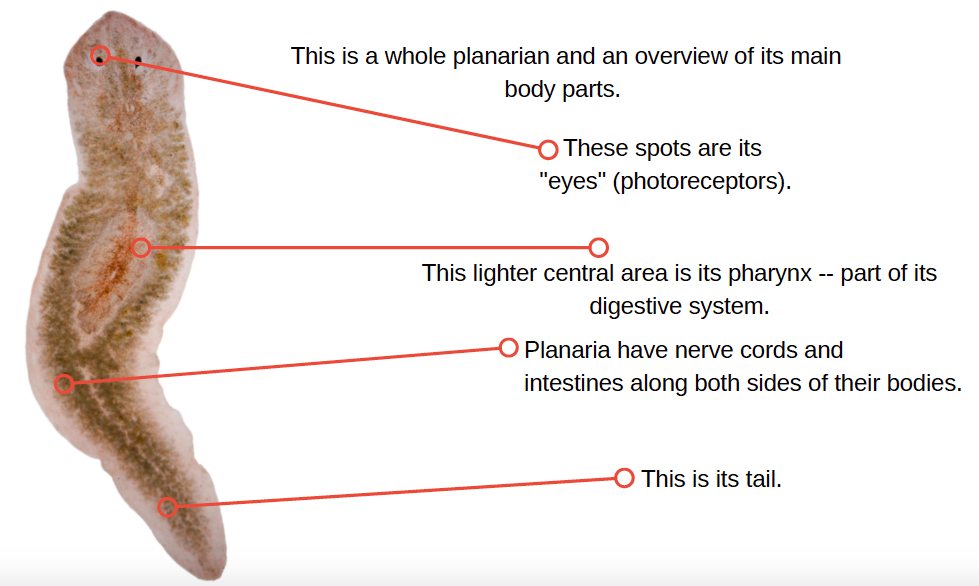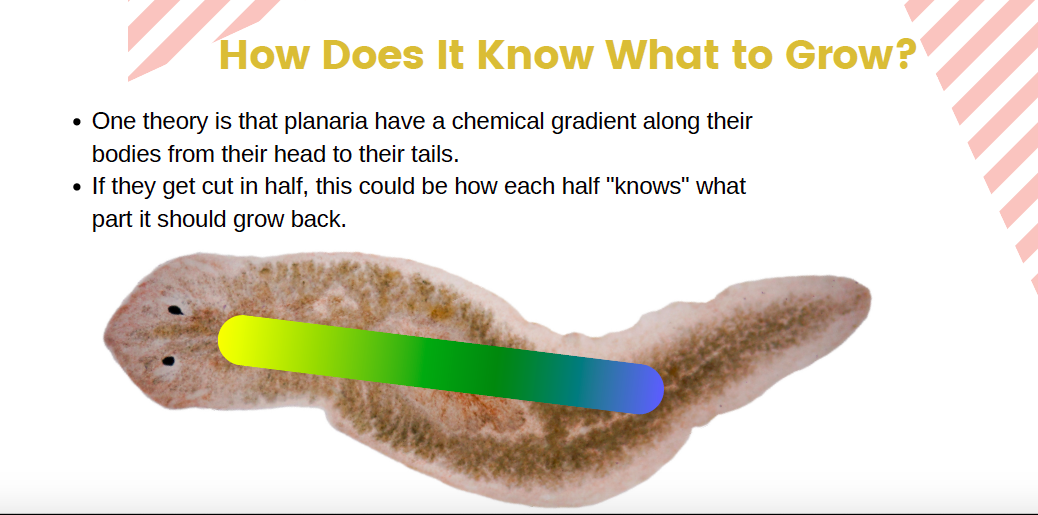About Planaria

What makes this tiny, almost cute worm so fascinating to the scientific and medical communities?
While the differences between planaria and humans are obviously immense, consider our similarities:
MODEL ORGANISMS
The more basic a view you take of planaria and human biology, the more similar they appear. They have most of the same fundamental systems that we do, like musculature, a nervous system, digestive tract, and reproductive organs, and on a genetic level even more similarities become apparent.
DNA is organized into systems of machinery that are shared and sometimes do the same job even in organisms as different as humans and planaria because the basics of building an organism are often very similar. The FoxA gene is a perfect example of this as a gene we both have: in human embryos, it guides the construction of organs, and in planaria, scientists can show that it’s necessary for regenerating the pharynx after it is lost. See the connection?
Even in organisms as different as people and planaria, there are striking similarities in the way these basic processes work, and by studying planaria, scientists can learn a lot about humans.
REGENERATION
Say a small fish spots a planarian in the crevice of a rock and attacks, severing its body in two. How does the half that is left regenerate the missing half? How does it “know” which half it is?
The answer is: a gradient of a certain chemical, going from the head to the tail, which the planarian’s cells can reference in order to determine if they are in the head or tail area. If the planarian is cut thinly enough, there ceases to be much of this gradient and cells become confused, potentially regrowing a second head instead of a tail.
While the differences between planaria and humans are obviously immense, consider our similarities:
- We both are composed of cells that contain information in the form of DNA that dictates how our tissues will grow into a full organism.
- We both have stem cells, a particularly important cell for embryonic development because of their ability to change into other kinds of more specialized cells, like blood cells or neurons.
MODEL ORGANISMS
The more basic a view you take of planaria and human biology, the more similar they appear. They have most of the same fundamental systems that we do, like musculature, a nervous system, digestive tract, and reproductive organs, and on a genetic level even more similarities become apparent.
DNA is organized into systems of machinery that are shared and sometimes do the same job even in organisms as different as humans and planaria because the basics of building an organism are often very similar. The FoxA gene is a perfect example of this as a gene we both have: in human embryos, it guides the construction of organs, and in planaria, scientists can show that it’s necessary for regenerating the pharynx after it is lost. See the connection?
Even in organisms as different as people and planaria, there are striking similarities in the way these basic processes work, and by studying planaria, scientists can learn a lot about humans.
REGENERATION
Say a small fish spots a planarian in the crevice of a rock and attacks, severing its body in two. How does the half that is left regenerate the missing half? How does it “know” which half it is?
The answer is: a gradient of a certain chemical, going from the head to the tail, which the planarian’s cells can reference in order to determine if they are in the head or tail area. If the planarian is cut thinly enough, there ceases to be much of this gradient and cells become confused, potentially regrowing a second head instead of a tail.


